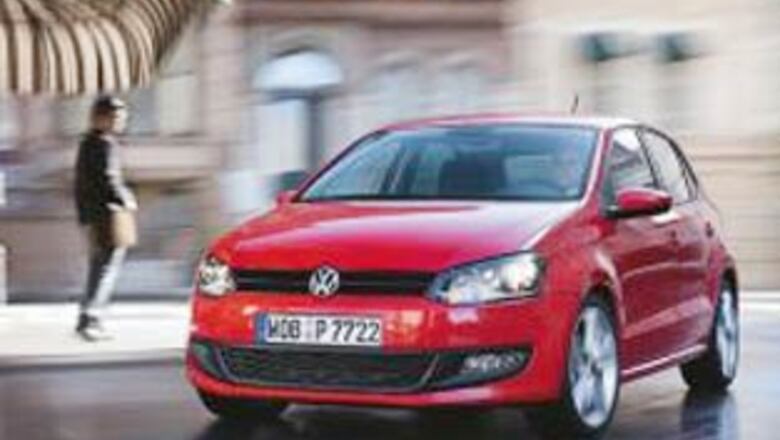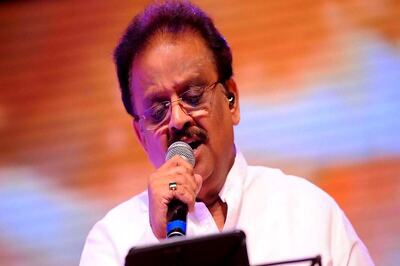
views
With every automotive manufacturer posting record sales figures, you wouldn’t believe that just 12 months ago they were buckling over from the proverbial kick in the gonads. Today they are falling over themselves to add fresh capacities and churn out more cars for the insatiable Indian car buyer. The Auto Expo in January will give the clearest indication yet of how big India is set to be on the world’s automotive map. In fact, the Auto Expo is set to rival some of the glitziest auto shows for size and scale, dwarfing the likes of the Tokyo Motor Show and setting the tone for 2010: A year that’s expected to be the best ever as far as the Indian automotive story is concerned. So what will we be driving in 2010?
Compact MPVs
The people-mover segment will be addressed by two newcomers: Volkswagen’s (VW) Touran, a seven-seater MPV (multi-purpose vehicle) that’s being assembled in Indonesia; and Nissan’s NV2000 Vanette, which it will bring in via its joint venture with Ashok Leyland — it has already won some Van of the Year awards and has the USP of sliding rear doors.
Tata Motors too will bring in the IndiCruz. However, before that will be an upgrade to the breathtakingly underdeveloped Sumo Grande that, hopefully, will address issues of quality and styling.
Of greater significance is the emergence of the compact-MPV. VW, Toyota and Nissan will follow up on their hatchbacks with not just a sedan based on the same platform but also create a new segment, the C-MPV. Smaller than the Innova, but with three rows of seats, the C-MPV is suited to Indian needs (and families). In fact, the pioneer in this segment, Maruti — forgotten the Omni and Versa? — will also have a replacement for the Versa, with better styling and a diesel engine.
Hatchbacks
All said and done, India is still a market driven by hatchbacks and 2010 will see the two biggest manufacturers in the world — Toyota and Volkswagen — join the party. First off the blocks will be VW with the all-new Polo that only recently went on sale in Germany. Indian deliveries will start in March as VW goes into overdrive in expanding the dealer network. One of the interesting brand-building activities will be the single-make Polo Cup India race series: 25 Polos, powered by 1.6-litre diesel engines, will race in a six-round championship.
PAGE_BREAK
We have driven the Polo on its launch, in Sardinia, Italy, and initial impressions are of a solidly-built car that feels rock-steady at speed and pampers occupants with good ride quality.
The Polo will be built at VW’s new plant at Chakan, near Pune, and on the same lines as the Skoda Fabia. The 1.2-litre three-cylinder petrol is carried over from the Fabia while on the diesel front it will get a brand new 1.2-litre Turbocharged Direct Injection common-rail diesel (which will make its way into the Fabia). In fact, the main challenge VW will face is pricing vis-à-vis the Fabia; Skoda will have to reduce its price to make way for the Polo over it.
Toyota, on the other hand, has been massively hit by the recession. Last year it posted its first loss in 70 years: a staggering $1.7 billion. The only new investment Toyota has committed has been India and at the Auto Expo the wraps will be taken off Toyota’s first small car for India.
Code-named Project EFC, it will be sold in BRIC countries, but India will be the lead market. Engineers have benchmarked it against the Maruti Suzuki Swift. Details are sketchy but Toyota insists the car will not start a price war; instead it will have space and quality to justify its premium. Expected launch is end-2010.
PAGE_BREAK
Nissan will also make an entry with the new Micra (to be globally unveiled at the Geneva Motor Show in March). The basic premise of the Micra follows a simple and logical chain: A lightweight car will provide better efficiency which means it will need a smaller fuel tank which in turn leads to better packaging and a comfortable and spacious interior.
Further headaches for established players in this segment — Maruti, Hyundai and Tata Motors — will come courtesy of two price warriors: The Ford Figo and Chevrolet Beat. The Figo is based on the current Ikon/Fiesta/Fusion platform (which will give the car a great cost advantage) but with better space efficiency and improved ride and handling.
GM’s Indian dealers will have a lot to cheer about with Beat, the next generation Spark/Matiz developed by the erstwhile Daewoo in South Korea, sporting aggressive styling and much better interiors. However, in the best Maruti-inspired tradition, the Beat will not replace the current Spark. Instead, the Spark will get a smaller 800cc engine and prices will be chopped to slot in below the Alto, taking the price excruciatingly close to the Nano! The Spark will also have an electric variant, jointly developed with Reva.


















Comments
0 comment